
Preventing Running Injuries in the Fall
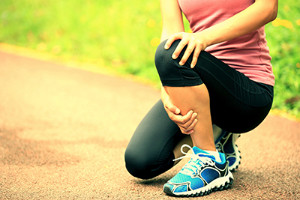 Autumn is a lovely time of the year but can present some difficulties for runners. While generally not a dangerous time to run, there are some tips one should consider to help prevent running injuries in the fall. Avoid ground that is covered in leaves. This is important, as leaves can be wet and make slips more likely. Furthermore, leaves can also cover up holes in the ground, mud, or other obstacles that can cause you to fall or hurt your foot or ankle. Another tip is to wear brighter or more contrasting colors if you run alongside a road or woodlands. This will keep you visible to drivers. Regardless of whenever or wherever you run, staying alert of your surroundings and following some basic safety tips can monumentally help prevent any running injuries.
Autumn is a lovely time of the year but can present some difficulties for runners. While generally not a dangerous time to run, there are some tips one should consider to help prevent running injuries in the fall. Avoid ground that is covered in leaves. This is important, as leaves can be wet and make slips more likely. Furthermore, leaves can also cover up holes in the ground, mud, or other obstacles that can cause you to fall or hurt your foot or ankle. Another tip is to wear brighter or more contrasting colors if you run alongside a road or woodlands. This will keep you visible to drivers. Regardless of whenever or wherever you run, staying alert of your surroundings and following some basic safety tips can monumentally help prevent any running injuries.
Exercising your feet regularly with the proper foot wear is a great way to prevent injuries. If you have any concerns about your feet, contact one of our podiatrists of Pennsylvania. Our doctors will treat your foot and ankle needs.
How to Prevent Running Injuries
Many common running injuries are caused by overuse and overtraining. When the back of the kneecap starts wearing out and starts causing pain in your knee, this is commonly referred to as runner’s knee. Runner’s knee is a decrease in strength in your quadriceps and can occur if you’re not wearing properly fitted or supporting shoes. To prevent runner’s knee, focusing on hip strengthening is a good idea, as well as strengthening your quads to keep the kneecaps aligned.
What Are Some Causes of Running Injuries?
- One cause of a common running injury is called iliotibial band syndrome.
- Plantar fasciitis is also another common injury.
- Stress fractures can occur from overtraining, lack of calcium, or even your running style.
Best Ways to Prevent Running Injuries
- Wear footwear that fits properly and suits your running needs.
- Running shoes are the only protective gear that runners have to safeguard them from injury.
- Make a training schedule. Adding strengthening exercises as well as regular stretching can help keep you strong and limber and can lessen the possibility of injuries.
- Stretching keeps muscles limber; this will help you gain better flexibility.
If you have any questions please feel free to contact one of our offices located in Plymouth Meeting and Ambler, PA . We offer the newest diagnostic and treatment technologies for all your foot and ankle needs.
Explanation of a Stress Fracture
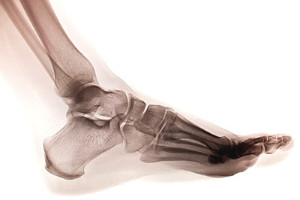 Stress fractures are typically what is known as an “overuse injury”. It commonly happens in response to a heavy workload placed on the bone. Over time, a buildup of calcium occurs around the bone when it’s overused. If the bone is not able to repair itself while not undergoing stress, tiny cracks may form, resulting in what is know as a stress fracture. It typically occurs in the foot, leg and pelvis. Some symptoms can include pain and swelling. Because it’s more common for women to develop osteoporosis, they’re much more likely to obtain a stress fracture. When the lower part of the body is overused, the bones of the feet are at great risk for stress fractures.
Stress fractures are typically what is known as an “overuse injury”. It commonly happens in response to a heavy workload placed on the bone. Over time, a buildup of calcium occurs around the bone when it’s overused. If the bone is not able to repair itself while not undergoing stress, tiny cracks may form, resulting in what is know as a stress fracture. It typically occurs in the foot, leg and pelvis. Some symptoms can include pain and swelling. Because it’s more common for women to develop osteoporosis, they’re much more likely to obtain a stress fracture. When the lower part of the body is overused, the bones of the feet are at great risk for stress fractures.
Activities where too much pressure is put on the feet can cause stress fractures. To learn more, contact one of our podiatrists from Pennsylvania. Our doctors can provide the care you need to keep your pain free and on your feet.
Dealing with Stress Fractures of the Foot and Ankle
Stress fractures occur in the foot and ankle when muscles in these areas weaken from too much or too little use. The feet and ankles then lose support when walking or running from the impact of the ground. Since there is no protection, the bones receive the full impact of each step. Stress on the feet can cause cracks to form in the bones, thus creating stress fractures.
What Are Stress Fractures?
Stress fractures occur frequently in individuals whose daily activities cause great impact on the feet and ankles. Stress factors are most common among:
- Runners
- People affected with Osteoporosis
- Tennis or basketball players
- Gymnasts
- High impact workouts
Symptoms
Pain from the fractures occur in the area of the fractures and can be constant or intermittent. It will often cause sharp or dull pain with swelling and tenderness. Engaging in any kind of activity which involves high impact will aggravate pain.
If you have any questions please feel free to contact one of our offices located in Plymouth Meeting and Ambler, PA . We offer the newest diagnostic and treatment technologies for all your foot and ankle needs.
Common Foot Issues to Look Out For
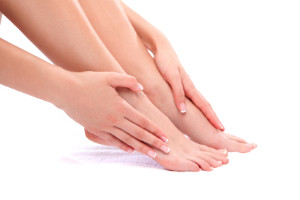 There are a great number of common foot ailments that can affect anyone. Here’s a small rundown on each and what to do about them. Plantar fasciitis, a common form of heel pain, is caused by the inflammation of the plantar fascia and generally occurs from overuse. Rest and wearing good footwear can help the pain go away, however, it is best to see a podiatrist for treatment. Flat feet are often treated by a podiatrist who can offer the best forms of appropriate treatment such as custom-made orthotics. Heel spurs are calcium deposits that form beneath the heel bones, potentially causing severe pain. Anti-inflammatory medications, exercise, and orthotics can help treat heel spurs; however, surgery may be necessary in some cases. Calluses, or thick patches of skin caused by friction, can be taken care of by eliminating sources of friction against the foot and moisturizing. For athletes and runners, spraining and straining the foot are always a possibility. Icing the foot, rest, and seeing a podiatrist are the best methods of treatment. Bunions are bony protrusions at the base of the big toe and can be exacerbated by poor footwear, such as heels. Once again, seeing a podiatrist is the best way to get treatment. Finally, ingrown toenails are a common condition and can be prevented by cutting your nails straight across and wearing shoes that give the toes ample space to move.
There are a great number of common foot ailments that can affect anyone. Here’s a small rundown on each and what to do about them. Plantar fasciitis, a common form of heel pain, is caused by the inflammation of the plantar fascia and generally occurs from overuse. Rest and wearing good footwear can help the pain go away, however, it is best to see a podiatrist for treatment. Flat feet are often treated by a podiatrist who can offer the best forms of appropriate treatment such as custom-made orthotics. Heel spurs are calcium deposits that form beneath the heel bones, potentially causing severe pain. Anti-inflammatory medications, exercise, and orthotics can help treat heel spurs; however, surgery may be necessary in some cases. Calluses, or thick patches of skin caused by friction, can be taken care of by eliminating sources of friction against the foot and moisturizing. For athletes and runners, spraining and straining the foot are always a possibility. Icing the foot, rest, and seeing a podiatrist are the best methods of treatment. Bunions are bony protrusions at the base of the big toe and can be exacerbated by poor footwear, such as heels. Once again, seeing a podiatrist is the best way to get treatment. Finally, ingrown toenails are a common condition and can be prevented by cutting your nails straight across and wearing shoes that give the toes ample space to move.
Everyday foot care is very important to prevent infection and other foot ailments. If you need your feet checked, contact one of our podiatrists from Pennsylvania. Our doctors can provide the care you need to keep you pain-free and on your feet.
Everyday Foot Care
Often, people take care of their bodies, face and hair more so than they do for their feet. But the feet are a very important aspect of our bodies, and one that we should pay more attention to. Without our feet, we would not be able to perform most daily tasks.
It is best to check your feet regularly to make sure there are no new bruises or cuts that you may not have noticed before. For dry feet, moisturizer can easily be a remedy and can be applied as often as necessary to the affected areas. Wearing shoes that fit well can also help you maintain good foot health, as well as making it easier to walk and do daily activities without the stress or pain of ill-fitting shoes, high heels, or even flip flops. Wearing clean socks with closed shoes is important to ensure that sweat and bacteria do not accumulate within the shoe. Clean socks help to prevent Athlete’s foot, fungi problems, bad odors, and can absorb sweat.
If you have any questions please feel free to contact one of our offices located in Plymouth Meeting and Ambler, PA . We offer the newest diagnostic and treatment technologies for all your foot and ankle needs.
How to Prevent Falls Among the Elderly
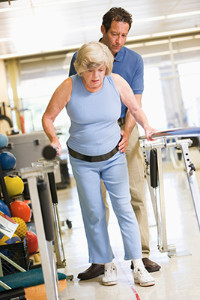 Elderly Americans are at an increased risk of falling than younger Americans. Falls are a leading cause of injury among the elderly, therefore it is important for older persons to know how to prevent them in the first place. Staying active through exercising is an excellent way to stay flexible, mobile, and strong. There are exercise groups all over the country that help older people stay in shape. Make sure to clear any debris from the floor that can make tripping more likely. Lighting is another important aspect in preventing falls in the home. Installing night lights that turn on automatically in and near the restroom can help prevent falls during late-night bathroom trips. Going to routine check-ups with a doctor is advised as well, and it is important to ask if any prescribed medications can cause drowsiness or lightheadedness. Finally, have one’s eyes and hearing checked regularly to help maintain alertness. Falls pose a unique risk to older citizens, and knowing how to prevent them can make all the difference.
Elderly Americans are at an increased risk of falling than younger Americans. Falls are a leading cause of injury among the elderly, therefore it is important for older persons to know how to prevent them in the first place. Staying active through exercising is an excellent way to stay flexible, mobile, and strong. There are exercise groups all over the country that help older people stay in shape. Make sure to clear any debris from the floor that can make tripping more likely. Lighting is another important aspect in preventing falls in the home. Installing night lights that turn on automatically in and near the restroom can help prevent falls during late-night bathroom trips. Going to routine check-ups with a doctor is advised as well, and it is important to ask if any prescribed medications can cause drowsiness or lightheadedness. Finally, have one’s eyes and hearing checked regularly to help maintain alertness. Falls pose a unique risk to older citizens, and knowing how to prevent them can make all the difference.
Preventing falls among the elderly is very important. If you are older and have fallen or fear that you are prone to falling, consult with one of our podiatrists from Pennsylvania. Our doctors will assess your condition and provide you with quality advice and care.
Every 11 seconds, an elderly American is being treated in an emergency room for a fall related injury. Falls are the leading cause of head and hip injuries for those 65 and older. Due to decreases in strength, balance, senses, and lack of awareness, elderly persons are very susceptible to falling. Thankfully, there are a number of things older persons can do to prevent falls.
How to Prevent Falls
Some effective methods that older persons can do to prevent falls include:
- Enrolling in strength and balance exercise program to increase balance and strength
- Periodically having your sight and hearing checked
- Discuss any medications you have with a doctor to see if it increases the risk of falling
- Clearing the house of falling hazards and installing devices like grab bars and railings
- Utilizing a walker or cane
- Wearing shoes that provide good support and cushioning
- Talking to family members about falling and increasing awareness
Falling can be a traumatic and embarrassing experience for elderly persons; this can make them less willing to leave the house, and less willing to talk to someone about their fears of falling. Doing such things, however, will increase the likelihood of tripping or losing one’s balance. Knowing the causes of falling and how to prevent them is the best way to mitigate the risk of serious injury.
If you have any questions, please feel free to contact one of our offices located in Plymouth Meeting and Ambler, PA . We offer the newest diagnostic and treatment technologies for all your foot care needs.
Lebron James Still Out From Sprained Ankle
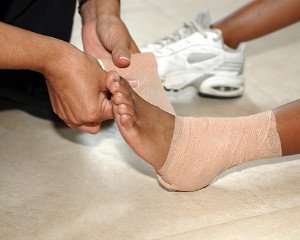 Cleveland Cavaliers small forward (SF) Lebron James recently sprained his left ankle in an unknown way. The injury has forced him to miss two practices so far. James’ condition is unknown, and it is also unknown how long he will be out. X-rays taken after the injury came back negative. Lebron James is a three-time NBA champion and a well-known player. Though his injury is unfortunate for the team, fortunately the Cavaliers recently gained a great player in Dwyane Wade.
Cleveland Cavaliers small forward (SF) Lebron James recently sprained his left ankle in an unknown way. The injury has forced him to miss two practices so far. James’ condition is unknown, and it is also unknown how long he will be out. X-rays taken after the injury came back negative. Lebron James is a three-time NBA champion and a well-known player. Though his injury is unfortunate for the team, fortunately the Cavaliers recently gained a great player in Dwyane Wade.
Sports related foot and ankle injuries require proper treatment before players can go back to their regular routines. For more information, contact one of our podiatrists of Pennsylvania. Our doctors can provide the care you need to keep you pain-free and on your feet.
Sports Related Foot and Ankle Injuries
Foot and ankle injuries are a common occurrence when it comes to athletes of any sport. While many athletes dismiss the initial aches and pains, the truth is that ignoring potential foot and ankle injuries can lead to serious problems. As athletes continue to place pressure and strain the area further, a mild injury can turn into something as serious as a rupture and may lead to a permanent disability. There are many factors that contribute to sports related foot and ankle injuries, which include failure to warm up properly, not providing support or wearing bad footwear. Common injuries and conditions athletes face, including:
- Plantar Fasciitis
- Plantar Fasciosis
- Achilles Tendinitis
- Achilles Tendon Rupture
- Ankle Sprains
Sports related injuries are commonly treated using the RICE method. This includes rest, applying ice to the injured area, compression and elevating the ankle. More serious sprains and injuries may require surgery, which could include arthroscopic and reconstructive surgery. Rehabilitation and therapy may also be required in order to get any recovering athlete to become fully functional again. Any unusual aches and pains an athlete sustains must be evaluated by a licensed, reputable medical professional.
If you have any questions please feel free to contact one of our offices located in Plymouth Meeting and Ambler, PA . We offer the newest diagnostic and treatment technologies for all your foot and ankle needs.
What is Athlete’s Foot and How to Prevent It
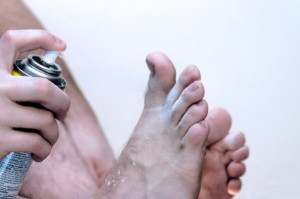 Athlete’s foot is a skin infection caused by fungus. As the name implies, it is common among athletes; this is mainly due to the fact that locker rooms, pools, and public showers are likely to harbor the fungus. The fungus also prefers moist, warm, and dark areas such as in between the toes on feet that are generally covered with shoes. While the infection usually first occurs between the toes, it can spread to the rest of the foot. Symptoms include redness, itchiness, burning sensations, and peeling skin. If scratched, the fungus can spread to other parts of the body like nails. To prevent athlete’s foot, keep your feet dry. If your feet sweat a lot, change socks frequently to prevent moisture buildup. Once you are finished showering or out of the pool, dry the feet thoroughly. Finally, wear shoes that allow the feet to "breathe” to help prevent sweat and allow the feet to cool down.
Athlete’s foot is a skin infection caused by fungus. As the name implies, it is common among athletes; this is mainly due to the fact that locker rooms, pools, and public showers are likely to harbor the fungus. The fungus also prefers moist, warm, and dark areas such as in between the toes on feet that are generally covered with shoes. While the infection usually first occurs between the toes, it can spread to the rest of the foot. Symptoms include redness, itchiness, burning sensations, and peeling skin. If scratched, the fungus can spread to other parts of the body like nails. To prevent athlete’s foot, keep your feet dry. If your feet sweat a lot, change socks frequently to prevent moisture buildup. Once you are finished showering or out of the pool, dry the feet thoroughly. Finally, wear shoes that allow the feet to "breathe” to help prevent sweat and allow the feet to cool down.
Athlete’s foot is an inconvenient condition that can be easily reduced with the proper treatment. If you have any concerns about your feet and ankles, contact one of our podiatrists from Pennsylvania. Our doctors will treat your foot and ankle needs.
Athlete’s Foot: The Sole Story
Athlete's foot, also known as tinea pedis, can be an extremely contagious foot infection. It is commonly contracted in public changing areas and bathrooms, dormitory style living quarters, around locker rooms and public swimming pools, or anywhere your feet often come into contact with other people.
Solutions to Combat Athlete’s Foot
- Hydrate your feet by using lotion
- Exfoliate
- Buff off nails
- Use of anti-fungal products
- Examine your feet and visit your doctor if any suspicious blisters or cuts develop
Athlete’s foot can cause many irritating symptoms such as dry and flaking skin, itching, and redness. Some more severe symptoms can include bleeding and cracked skin, intense itching and burning, and even pain when walking. In the worst cases, Athlete’s foot can cause blistering as well. Speak to your podiatrist for a better understanding of the different causes of Athlete’s foot, as well as help in determining which treatment options are best for you.
If you have any questions please feel free to contact one of our offices located in Plymouth Meeting and Ambler, PA . We offer the newest diagnostic and treatment technologies for all your foot and ankle needs.
Exercises That Strengthen Your Feet
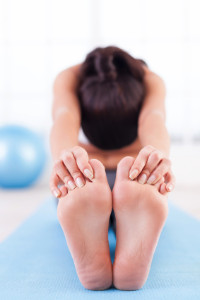 Many people spend a lot of time exercising. Often, they wind up working out every part of their body but their feet. While it may not seem important, having strong feet improves balance and mobility, and promotes overall body health. The following are some exercises that can help increase foot strength, with the approval of your podiatrist. Flexed-toe raises can be completed by first standing on a slanted board while holding onto something. Then, bring your heels off the ground while standing on the balls of your feet for 12-16 repetitions. Lifting each of your toes up separately 10 times each will help increase flexibility. After that, point all of your toes up in the air and then curl them in; do 20 of these for each foot. Foot crunches, which are done by picking your foot up and contracting the toe joints and heel together for 10 seconds, should be done with each foot six times. Finally, while standing, shift your weight to your left and pull at the ground with your right toes by scrunching them to move forward. Do this 10 times before switching to the opposite leg.
Many people spend a lot of time exercising. Often, they wind up working out every part of their body but their feet. While it may not seem important, having strong feet improves balance and mobility, and promotes overall body health. The following are some exercises that can help increase foot strength, with the approval of your podiatrist. Flexed-toe raises can be completed by first standing on a slanted board while holding onto something. Then, bring your heels off the ground while standing on the balls of your feet for 12-16 repetitions. Lifting each of your toes up separately 10 times each will help increase flexibility. After that, point all of your toes up in the air and then curl them in; do 20 of these for each foot. Foot crunches, which are done by picking your foot up and contracting the toe joints and heel together for 10 seconds, should be done with each foot six times. Finally, while standing, shift your weight to your left and pull at the ground with your right toes by scrunching them to move forward. Do this 10 times before switching to the opposite leg.
Exercising your feet regularly with the proper foot wear is a great way to prevent injuries and build strength. If you have any concerns about your feet, contact one of our podiatrists from Pennsylvania. Our doctors can provide the care you need to keep you pain-free and on your feet.
Exercise for Your Feet
Exercise for your feet can help you gain strength, mobility and flexibility in your feet. They say that strengthening your feet can be just as rewarding as strengthening another part of the body. Your feet are very important, and we often forget about them in our daily tasks. But it is because of our feet that are we able to get going and do what we need to. For those of us fortunate enough to not have any foot problems, it is an important gesture to take care of them to ensure good health in the long run.
Some foot health exercises can include ankle pumps, tip-toeing, toe rises, lifting off the floor doing reps and sets, and flexing the toes. It is best to speak with Our doctors to determine an appropriate regimen for your needs. Everyone’s needs and bodies are different, and the activities required to maintain strength in the feet vary from individual to individual.
Once you get into a routine of doing regular exercise, you may notice a difference in your feet and how strong they may become.
If you have any questions please feel free to contact one of our offices located in Plymouth Meeting and Ambler, PA . We offer the newest diagnostic and treatment technologies for all your foot and ankle needs.
Diabetes and Foot Care
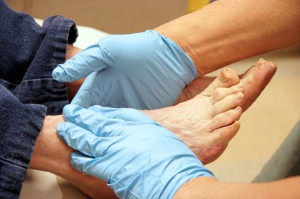 While the relationship between diabetes and the feet may not seem important to most people, it is of utmost concern. Diabetics generally suffer from poor blood circulation and neuropathy, or nerve loss. Due to the loss of sensation associated with neuropathy, diabetics may not realize when they have a foot ulcer. The wound may also become infected due to the poor blood circulation and improper healing. Amputations are not uncommon because of diabetes, and awareness of this issue is vital to those who have the condition. Diabetics should inspect their feet daily for wounds, splinters, or any abnormalities. If you have diabetes, avoid going barefoot and wear well-cushioned footwear that provides optimal foot support and wiggle room for the toes. Finally, it is highly recommended to see a podiatrist for a foot examination at least once a year.
While the relationship between diabetes and the feet may not seem important to most people, it is of utmost concern. Diabetics generally suffer from poor blood circulation and neuropathy, or nerve loss. Due to the loss of sensation associated with neuropathy, diabetics may not realize when they have a foot ulcer. The wound may also become infected due to the poor blood circulation and improper healing. Amputations are not uncommon because of diabetes, and awareness of this issue is vital to those who have the condition. Diabetics should inspect their feet daily for wounds, splinters, or any abnormalities. If you have diabetes, avoid going barefoot and wear well-cushioned footwear that provides optimal foot support and wiggle room for the toes. Finally, it is highly recommended to see a podiatrist for a foot examination at least once a year.
Diabetic foot care is important in preventing foot ailments such as ulcers. If you are suffering from diabetes or have any other concerns about your feet, contact one of our podiatrists from Pennsylvania. Our doctors can provide the care you need to keep you pain-free and on your feet.
Diabetic Foot Care
Diabetes affects millions of people every year. The condition can damage blood vessels in many parts of the body, especially the feet. Because of this, taking care of your feet is essential if you have diabetes, and having a podiatrist help monitor your foot health is highly recommended.
The Importance of Caring for Your Feet
- Routinely inspect your feet for bruises or sores.
- Wear socks that fit your feet comfortably.
- Wear comfortable shoes that provide adequate support.
Patients with diabetes should have their doctor monitor their blood levels, as blood sugar levels play such a huge role in diabetic care. Monitoring these levels on a regular basis is highly advised.
It is always best to inform your healthcare professional of any concerns you may have regarding your feet, especially for diabetic patients. Early treatment and routine foot examinations are keys to maintaining proper health, especially because severe complications can arise if proper treatment is not applied.
If you have any questions please feel free to contact one of our offices located in Plymouth Meeting and Ambler, PA . We offer the newest diagnostic and treatment technologies for all your foot and ankle needs.
Picking Footwear for Women
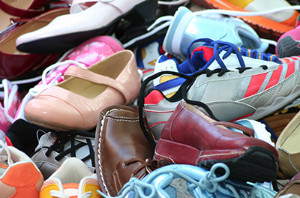 Choosing the right type of footwear for women can be difficult. High heels can exacerbate a number of foot-related issues such as bunions, plantar fasciitis, and ingrown toenails. Flats, on the other hand, don’t provide enough support for the foot. Knowing what to look for in a shoe can save you from a number of foot problems. Throughout the day, your feet tend to increase in size; with this in mind, it is recommended to buy shoes later in the day when the feet are largest. If a pair of shoes you want don’t offer arch support, try orthotic inserts to make them more comfortable and appropriate for your feet. Knowing what shoes to wear for specific occasions is important. Athletic shoes generally provide great comfort and support and are a good choice for everyday activities. When wearing high heels or flats, try not to wear them for more than two hours. Finally, make sure that the shoes you purchase aren’t too pointy for the toes. Shoes that allow the toes to wiggle around are recommended.
Choosing the right type of footwear for women can be difficult. High heels can exacerbate a number of foot-related issues such as bunions, plantar fasciitis, and ingrown toenails. Flats, on the other hand, don’t provide enough support for the foot. Knowing what to look for in a shoe can save you from a number of foot problems. Throughout the day, your feet tend to increase in size; with this in mind, it is recommended to buy shoes later in the day when the feet are largest. If a pair of shoes you want don’t offer arch support, try orthotic inserts to make them more comfortable and appropriate for your feet. Knowing what shoes to wear for specific occasions is important. Athletic shoes generally provide great comfort and support and are a good choice for everyday activities. When wearing high heels or flats, try not to wear them for more than two hours. Finally, make sure that the shoes you purchase aren’t too pointy for the toes. Shoes that allow the toes to wiggle around are recommended.
Getting the right shoe size is an important part of proper foot health. Seek the assistance of one of our podiatrists from Pennsylvania. Our doctors will provide the care you need to keep you pain-free and on your feet.
Getting the Right Shoe Size
There are many people who wear shoes that are the incorrect size, negatively affecting their feet and posture. Selecting the right shoes is not a difficult process, so long as you keep several things in mind when it comes to choosing the right pair.
- When visiting the shoe store, use the tools available to measure your foot.
- Be sure there is ‘wiggle room’. There should be about an inch between your toes and the tip of your shoes.
- Do not always assume you are the same size, as manufacturers run differently.
- Purchase shoes later in the day, as your feet swell as the day progresses.
- If a shoe is not comfortable, it is not suitable. Most shoes can’t be ‘broken in’, and comfort should be the ultimate goal when it comes to choosing the right pair of shoes
As our feet hold our body weight and keep us moving, it is important to treat them right. Picking the right pair of shoes can provide your feet comfort and mobility without pain.
If you have any questions, please feel free to contact one of our offices located in Plymouth Meeting and Ambler, PA . We offer the newest diagnostic and treatment technologies for all your foot care needs.
What are Bunions?
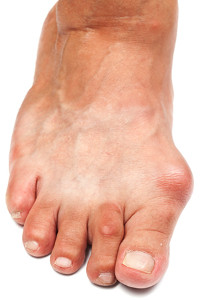 Hallux valgus, better known as bunions, is an enlargement of the inner portion of the joint at the base of the big toe. This can cause pain, tenderness, and redness near the big toe. Movement can worsen the pain, and overtime, the misalignment can become worse. Several conditions have been linked to bunions, with genetics playing a role as well. These include flat feet, obesity, abnormal bone structures, and overly flexible ligaments. Those of European descent are more likely to suffer from bunions. Shoes that aren’t wide enough and high heels can exacerbate bunions. While not all bunions require surgery, it is important to see a podiatrist first who can observe the severity of the deformation and provide treatment.
Hallux valgus, better known as bunions, is an enlargement of the inner portion of the joint at the base of the big toe. This can cause pain, tenderness, and redness near the big toe. Movement can worsen the pain, and overtime, the misalignment can become worse. Several conditions have been linked to bunions, with genetics playing a role as well. These include flat feet, obesity, abnormal bone structures, and overly flexible ligaments. Those of European descent are more likely to suffer from bunions. Shoes that aren’t wide enough and high heels can exacerbate bunions. While not all bunions require surgery, it is important to see a podiatrist first who can observe the severity of the deformation and provide treatment.
If you are suffering from bunions, contact one of our podiatrists of Pennsylvania. Our doctors can provide the care you need to keep you pain-free and on your feet.
What Is a Bunion?
A bunion is formed of swollen tissue or an enlargement of boney growth, usually located at the base joint of the toe that connects to the foot. The swelling occurs due to the bones in the big toe shifting inward, which impacts the other toes of the foot. This causes the area around the base of the big toe to become inflamed and painful.
Why Do Bunions Form?
Genetics – Susceptibility to bunions are often hereditary
Stress on the feet – Poorly fitted and uncomfortable footwear that places stress on feet, such as heels, can worsen existing bunions
How Are Bunions Diagnosed?
Doctors often perform two tests – blood tests and x-rays – when trying to diagnose bunions, especially in the early stages of development. Blood tests help determine if the foot pain is being caused by something else, such as arthritis, while x-rays provide a clear picture of your bone structure to your doctor.
How Are Bunions Treated?
- Refrain from wearing heels or similar shoes that cause discomfort
- Select wider shoes that can provide more comfort and reduce pain
- Anti-inflammatory and pain management drugs
- Orthotics or foot inserts
- Surgery
If you have any questions, please feel free to contact one of our offices located in Plymouth Meeting and Ambler, PA . We offer the newest diagnostic and treatment technologies for all your foot care needs.










